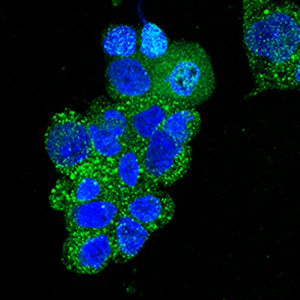Long non-coding RNA WAC antisense RNA 1 mediates hepatitis B virus replication in vitro by reinforcing miR-192-5p/ATG7-induced autophagy

Accepted: 21 July 2022
HTML: 16
All claims expressed in this article are solely those of the authors and do not necessarily represent those of their affiliated organizations, or those of the publisher, the editors and the reviewers. Any product that may be evaluated in this article or claim that may be made by its manufacturer is not guaranteed or endorsed by the publisher.
Authors
Long non-coding RNA WAC antisense RNA 1 (lncRNA WAC-AS1) is involved in the replication of the hepatitis B virus (HBV). The purpose of this study was to determine its functions and specific mechanism. The levels of lncRNA WAC-AS1, RNA (miR)-192-5p and were examined in serum of HBV-infected patients and in HepG2.2.15 cells using quantitative reverse transcriptase polymerase chain reaction (qRT-PCR) and Western blotting. Using the database starBase, the target binding sites of lncRNA WAC-AS1 and miR-192-5p were predicted and confirmed by dual-luciferase reporter assay and RNA pull-down assay. The expression of pgRNA and HBV DNA was determined by qRT-PCR, while the levels of HBeAg and HBsAg were measured by enzyme-linked immunosorbent assay (ELISA). Using laser scanning confocal microscopy, the light chain 3 (LC3) expression was analyzed. qRT-PCR and Western blotting were used to assess the expression of beclin-1, p62, and LC3I/II. Overexpression of lncRNA WAC-AS1, upregulation of ATG7. and downregulation of miR-192-5p were observed in the serum of HBV-infected patients and the in vitro model. miR-192-5p directly targets lncRNA WAC-AS1. LncRNA WAC-AS1 was downregulated in lncRNA WAC-AS1-shRNA‒transfected cells. miR-192-5p was upregulated in lncRNA WAC-AS1-shRNA-transfected cells and downregulated in cells transfected with a miR-192-5p inhibitor. In HepG2 2.15 cells, the downregulation of lncRNA WAC-AS1 inhibited HBV replication and autophagy. In contrast, the miR-192-5p inhibitor-transfected group exhibited the opposite results, and ATG7 overexpression reversed the effects of miR-192-5p mimic or lncRNA WAC-AS1-shRNA on HBV replication and cell autophagy. Our findings indicate that lncRNA WAC-AS1 regulates HBV replication by reinforcing the autophagy induced by miR-192-5p/ATG7. Consequently, lncRNA WAC-AS1 may serve as a therapeutically-promising target in HBV patients.
Ethics Approval
The experimental protocols were approved by the Ethics Committee of the Second Hospital of Nanjing, Nanjing University of Chinese Medicine, Nanjing, ChinaRights
Chinese National Research Grant of the Thirteenth Five-Year Plan for the Key Projects in Infectious Diseases; Development Project of The Affiliated Wuxi Maternity and Child Health Care Hospital of Nanjing Medical UniversityHow to Cite

This work is licensed under a Creative Commons Attribution-NonCommercial 4.0 International License.
PAGEPress has chosen to apply the Creative Commons Attribution NonCommercial 4.0 International License (CC BY-NC 4.0) to all manuscripts to be published.

 https://doi.org/10.4081/ejh.2022.3438
https://doi.org/10.4081/ejh.2022.3438






